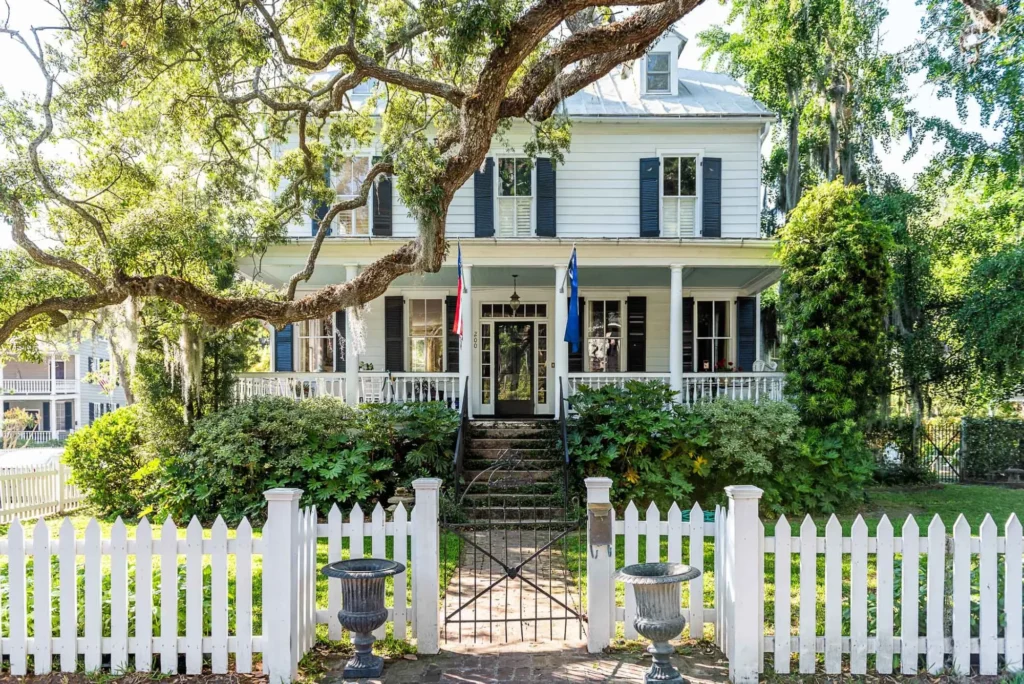
Get Rid of Millipedes in Your Lowcountry Home for Good
Across the Lowcountry, long warm seasons and humid nights keep millipedes active. They gather under thresholds, on patios, and around crawl-space doors.
All U Need Pest Control delivers region-smart control that dries edges, seals gaps, and treats harborages without heavy indoor spraying. Call 1 (888) 239-BUGS.
Pest Control Services in Lowcountry, SC
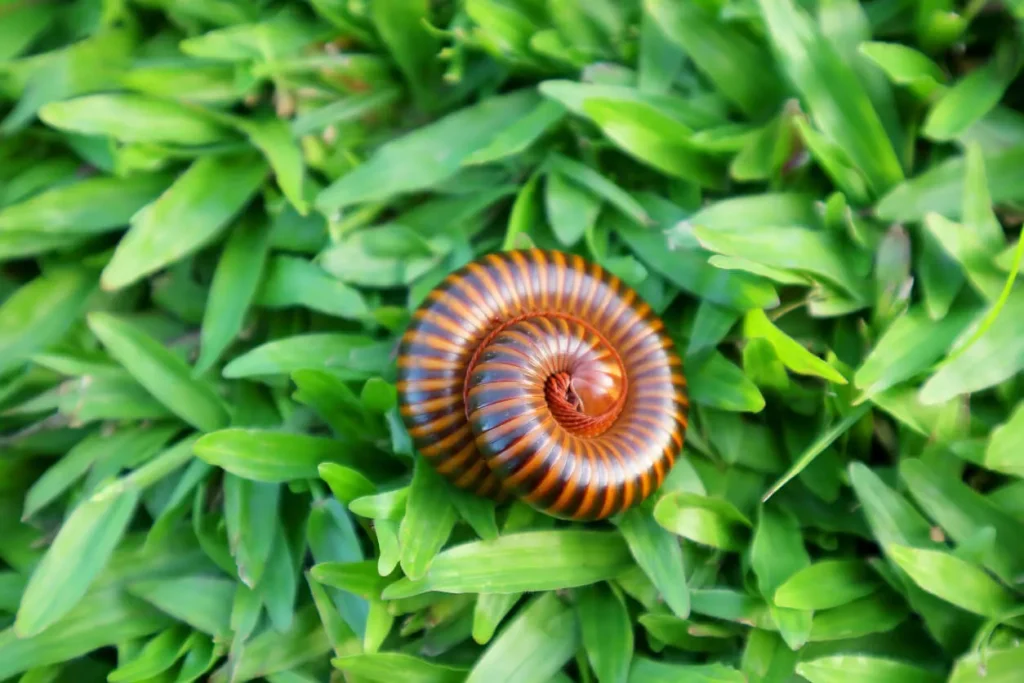
Millipede Control in Lowcountry, SC
Millipedes across the Lowcountry are more than just harmless wanderers—they are indicators that excess dampness, thick vegetation, and shaded yards are creating the perfect environment for these pests to thrive. The Lowcountry’s climate is defined by long stretches of humidity, salt-laden breezes, and frequent summer storms that create persistently moist conditions in landscapes. These conditions encourage millipedes to emerge in noticeable numbers, often migrating indoors after rainfall, during seasonal king tides, or when natural ground cover becomes oversaturated. While millipedes don’t pose a direct health risk, their defensive fluids can discolor porous materials and irritate sensitive skin, leaving homeowners eager for relief.
The region’s architecture magnifies the issue. Classic Lowcountry designs feature wide porches, shaded courtyards, and elevated homes with ventilated crawl spaces. These provide shaded, cool zones where millipedes thrive. Palmettos, crepe myrtles, magnolias, and live oaks drop abundant debris year-round, while popular pine straw mulch traps moisture. Combined, these elements set the stage for recurring infestations.
All U Need Pest Control offers solutions designed specifically for the Lowcountry. Whether it’s a historic property in Beaufort, a coastal cottage near Edisto, or a new build in Bluffton, our approach blends structural insight with moisture management. Our aim isn’t just eliminating the immediate nuisance—it’s removing the causes behind each migration so your home stays clear season after season.
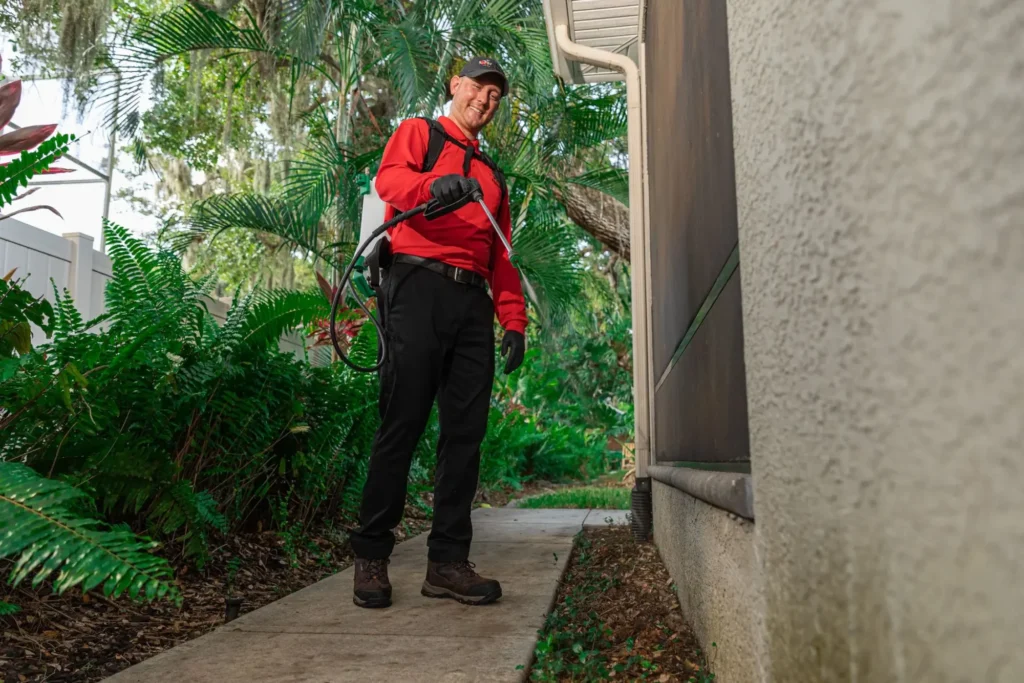
How to Get Rid of Millipedes in Lowcountry, SC
The key to controlling millipedes in the Lowcountry lies in understanding why they appear in the first place. They are decomposers, feeding on rotting leaves, mulch, and moist organic soil. During heavy rains, or when the high water table rises, millipedes flee their damp habitats and seek refuge in drier places—often the baseboards, porches, and interiors of homes. Simply sweeping them out won’t prevent their return, and crushing them leaves behind staining fluids.
Here’s the Lowcountry-specific roadmap for real relief:
Correct the moisture. Ensure that your home’s foundation remains dry by extending downspouts, repairing drainage around low spots, and maintaining dry crawl spaces. Raised homes can benefit from encapsulation or under-floor dehumidifiers, while slab homes should maintain vegetation-free strips along foundations to reduce damp soil buildup.
Modify the habitat. Replace thick pine straw near the house with mineral mulch or thin layers that dry more quickly. Collect fallen leaves after summer storms, particularly under large oaks or palmettos. Prune dense shrubs so that airflow prevents dampness from lingering against walls.
Seal the “easy” entries. Tight-fitting door sweeps, properly sealed thresholds, and screened crawl-space vents can significantly reduce entry points. In homes built on masonry, consider weep-hole guards to block millipedes while maintaining ventilation.
Use targeted treatments. Professional-grade perimeter and entryway applications provide a protective buffer right where millipedes travel. Proper timing around rainfall is critical in the Lowcountry, where storms arrive often.
Maintain consistently. Ongoing, seasonal services keep treatments effective during the wettest months of spring through fall.
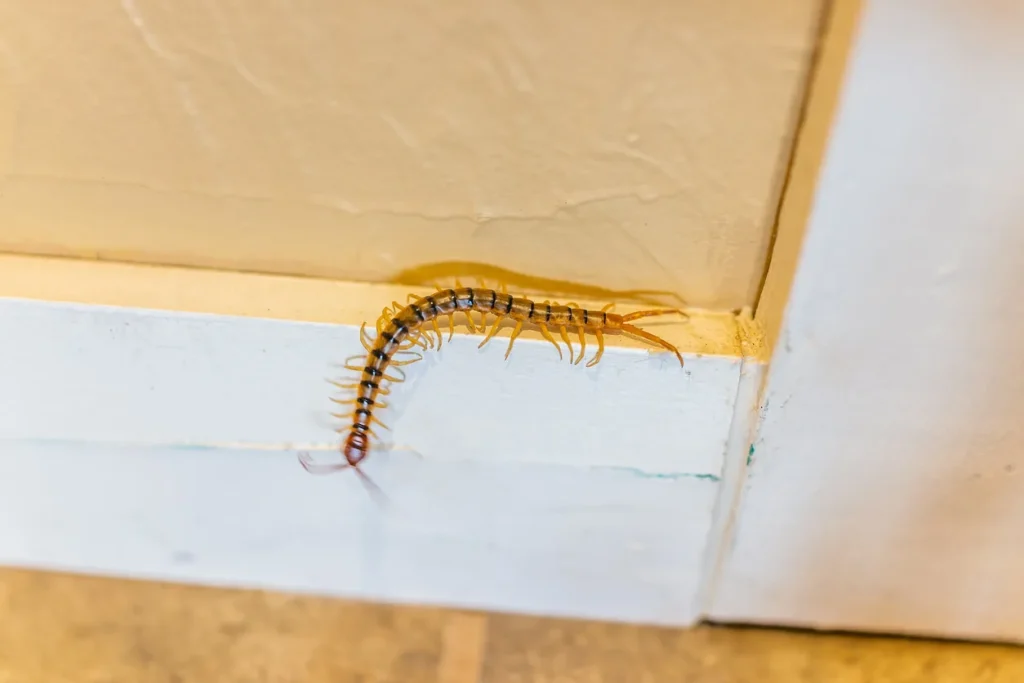
Millipede Treatment in Lowcountry, SC
Instead of blanket treatments, All U Need Pest Control tailors strategies to each home and its surroundings. The Lowcountry’s natural features—tidal creeks, salt marshes, and sandy soils—shape how millipedes behave, so each treatment plan is custom designed.
- The mix of native and ornamental vegetation around the property, particularly where shade and mulch retain moisture.
- The type and depth of mulch or stone along walkways, porches, and foundations.
- Irrigation schedules and drainage, including runoff patterns from summer downpours.
- Proximity to marshland, ponds, or shaded courtyards where dampness persists.
We also refine the plan by considering:
- When and where millipedes appear—such as post-storm waves, nightly migrations, or accumulation in garages and crawl spaces.
- How environmental shifts like king tides, tropical storms, or extreme humidity trigger movements indoors, particularly in raised vs. slab homes.
By combining Integrated Pest Management (IPM) with precise treatment methods, we ensure results that are long-lasting and environmentally sound.
Comprehensive Inspection/Consultation
Our inspections extend beyond surface sightings. We evaluate drainage, mulch depth, grading, irrigation patterns, door seals, vents, and crawl-space moisture. For historic Lowcountry properties, we pay attention to aged vapor barriers, deteriorating sill plates, and lush plantings that encourage lingering dampness. Once assessed, we provide a detailed plan aligned with your needs and budget.
Treatment
Based on inspection results, we apply targeted perimeter treatments focusing on foundation lines, thresholds, and shaded areas where millipedes concentrate. Raised cottages, older wooden structures, and modern cement-slab homes all receive strategies tailored to their vulnerabilities. Timing is essential, and treatments are scheduled to align with the rainfall cycle for maximum effect.
Ongoing Maintenance
The Lowcountry’s storms and humidity create recurring pest pressures. Seasonal maintenance ensures protective barriers remain intact, moisture is monitored, and harborage areas don’t become repopulated. After large rainfalls or seasonal king tides, our services reset conditions, preventing new migrations before they begin.
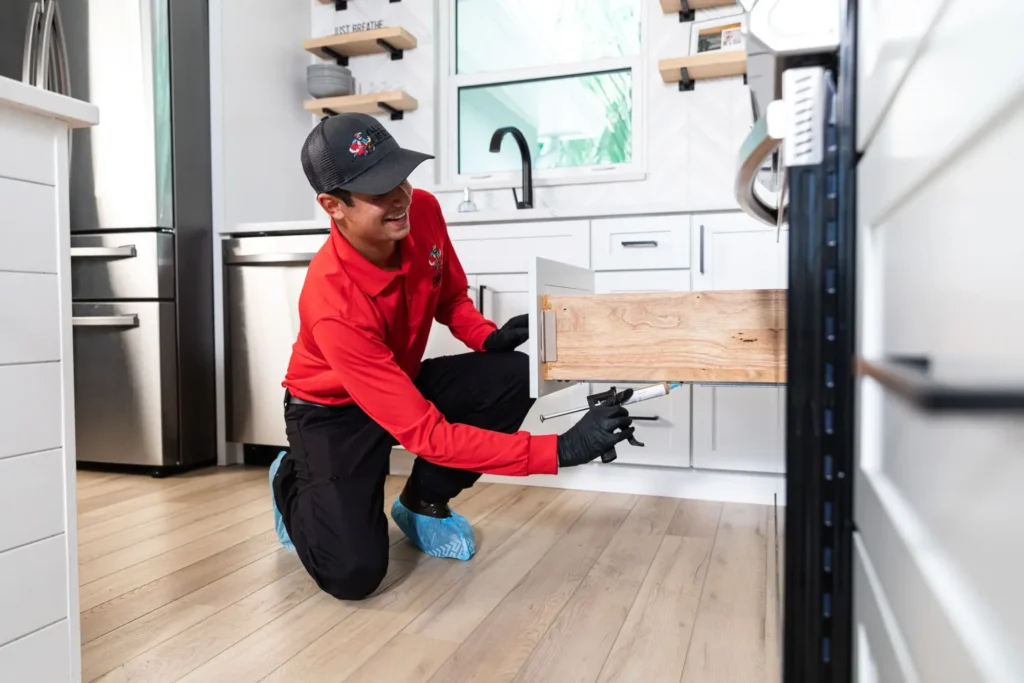
Signs of a Millipede Infestation in Lowcountry, SC
Sightings in Damp Areas
Millipedes in the Lowcountry frequently show up where humidity is constant: crawl spaces, bathrooms with poor ventilation, and along cool shaded baseboards. Outdoors, check beneath planters, mats, pine straw, and shaded porch steps. Large indoor gatherings of millipedes usually follow multi-day downpours or unusually high tides.
Damage to Plants
Though millipedes feed primarily on decayed organic matter, they may occasionally graze on tender seedlings or soft plant shoots in shaded garden beds. If you notice irregular damage to young plants, it’s likely a sign of high populations combined with limited natural food. Addressing debris, airflow, and mulch depth helps mitigate plant injury.
Dead Millipedes
You may find dried, curled remains of millipedes indoors, particularly near thresholds, garage corners, or on hard flooring. These deaths are not an end to the problem—they signal that millipedes are migrating inside and drying out. Removing the bodies without addressing the damp conditions outside won’t stop future intrusions.
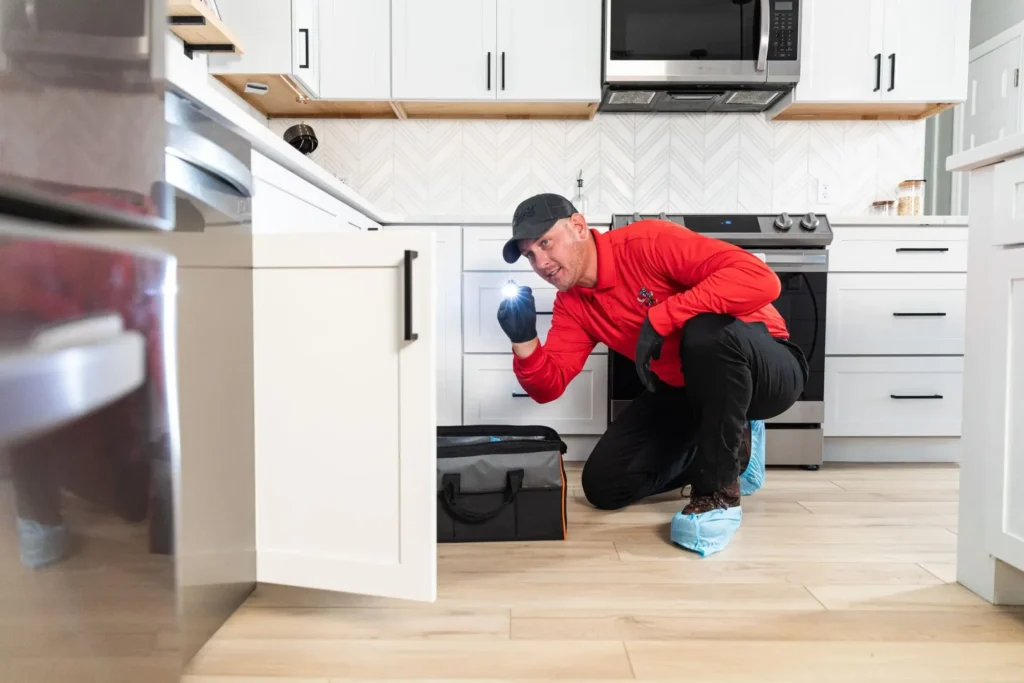
How to Check for Millipedes in Your Lowcountry Home
To determine the extent of activity, inspect the places they are most likely to hide and enter:
- Moist spaces including crawl areas, bathrooms, garages, and corners where baseboards meet flooring.
- Gaps beneath doors, deteriorated sweeps, open weep holes, and cracks around piping.
- Mulch, leaves, and pine straw pressed against foundations or beneath dense shrubs.
- Patios, downspout zones, and yard depressions that retain water after heavy rain or tidal flooding.
If you still see millipedes but can’t find their entry points, professional inspections can reveal hidden migration routes and the environmental triggers pulling them inside.
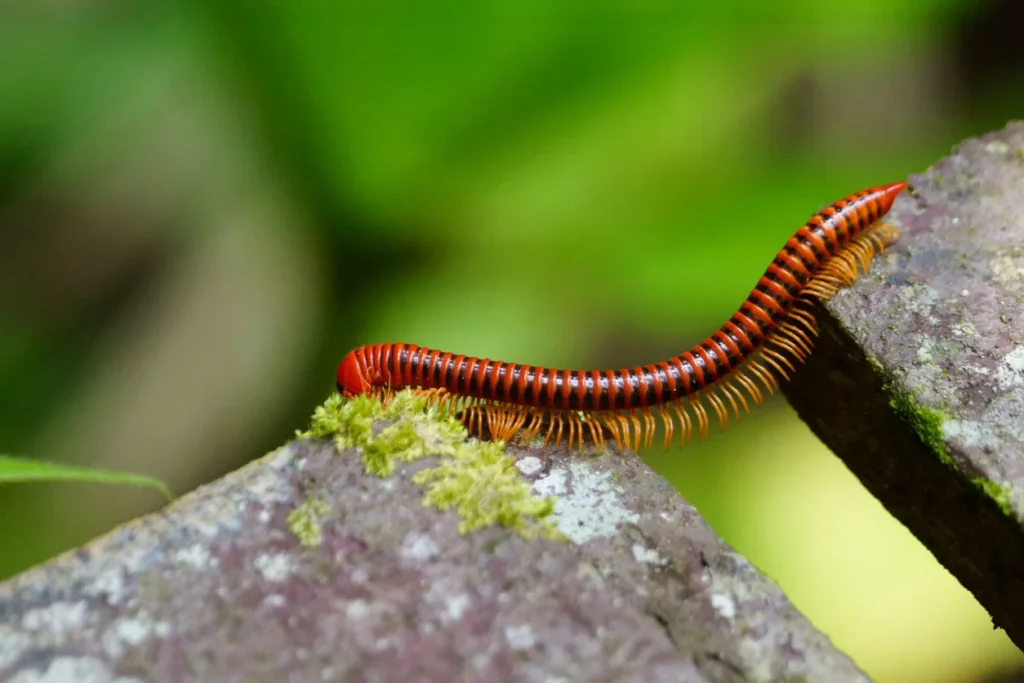
What Do Millipedes Look Like?
Millipedes are elongated, cylindrical arthropods with multiple segments, each carrying two pairs of legs. In the Lowcountry, they are often dark brown or gray, blending seamlessly with mulch and soil. They move slowly, unlike centipedes which are flatter and much faster. When threatened, millipedes curl into tight spirals—a behavior that makes them easy to distinguish from centipedes.
Other notable traits include:
- Dark or gray bodies that camouflage against pine straw, sand, and rich soils common to the Lowcountry.
- A rounded, twig-like profile with many visible segments and numerous leg pairs.
- Short antennae that help them navigate dim, moist environments.
Millipedes can live for several years, and females lay clusters of eggs in damp soils. By keeping your property perimeter dry and clear, you disrupt their life cycle and prevent future population surges.
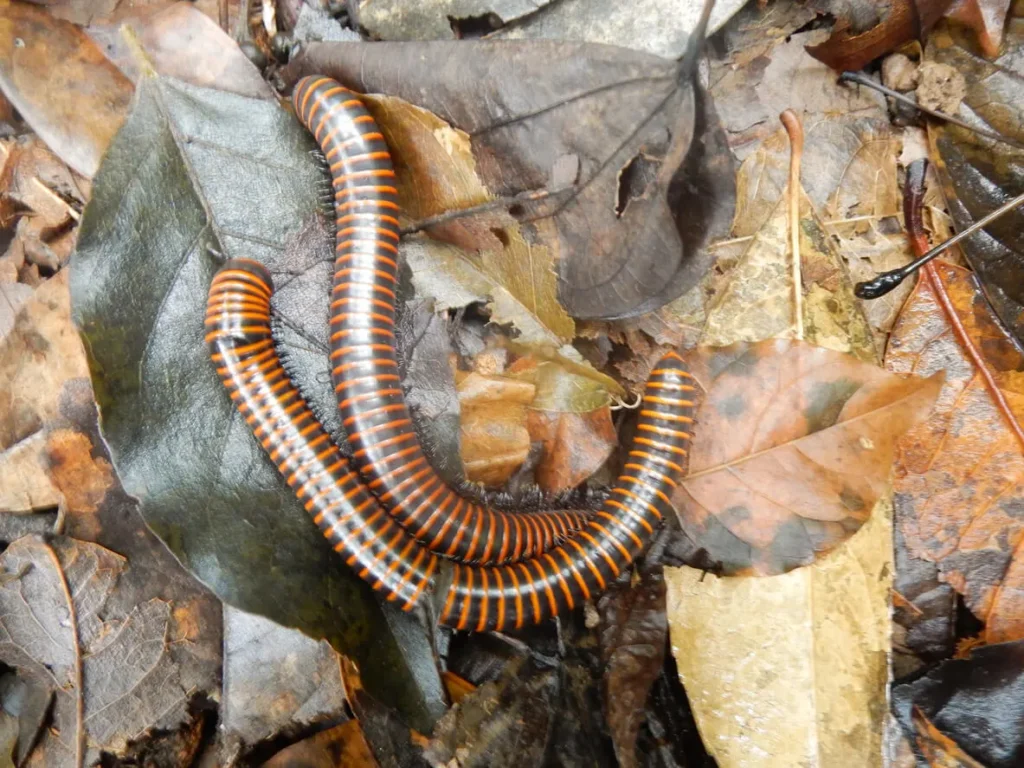
Eco-Friendly Solutions
At All U Need Pest Control, we understand the importance of preserving the Lowcountry’s delicate ecosystems. With salt marshes, estuaries, and tidal wetlands surrounding so many communities, responsible pest control is critical. Our strategies emphasize eco-conscious methods that balance effective pest management with environmental stewardship. We prioritize reducing moisture and harborage first, using targeted treatments only where millipedes travel.
Minimum-Risk Pesticides
We use carefully selected formulations with proven safety profiles, applying them precisely along thresholds, porches, crawl-space openings, and foundation edges where millipedes migrate. This method ensures pests are controlled without unnecessary exposure in living spaces. The philosophy is simple—right product, right place, right timing.
Eco-Friendly Solutions
Beyond treatments, we implement physical and cultural strategies to discourage millipedes naturally. This includes reducing damp organic matter, thinning pine straw near siding, and creating drier borders using gravel or stone. These simple changes improve your property’s appearance while lowering pest activity, and they align well with the Lowcountry’s emphasis on sustainability and natural beauty.
IPM Practices
Our Integrated Pest Management (IPM) approach blends inspection, exclusion, sanitation, moisture management, and highly targeted treatment. In the Lowcountry, this means accounting for the unique combination of humidity, shading, salt-air influence, and seasonal storms. From shaded gardens in Beaufort to breezy cottages on Hilton Head, IPM ensures tailored results that reduce reliance on chemicals and promote long-term balance.
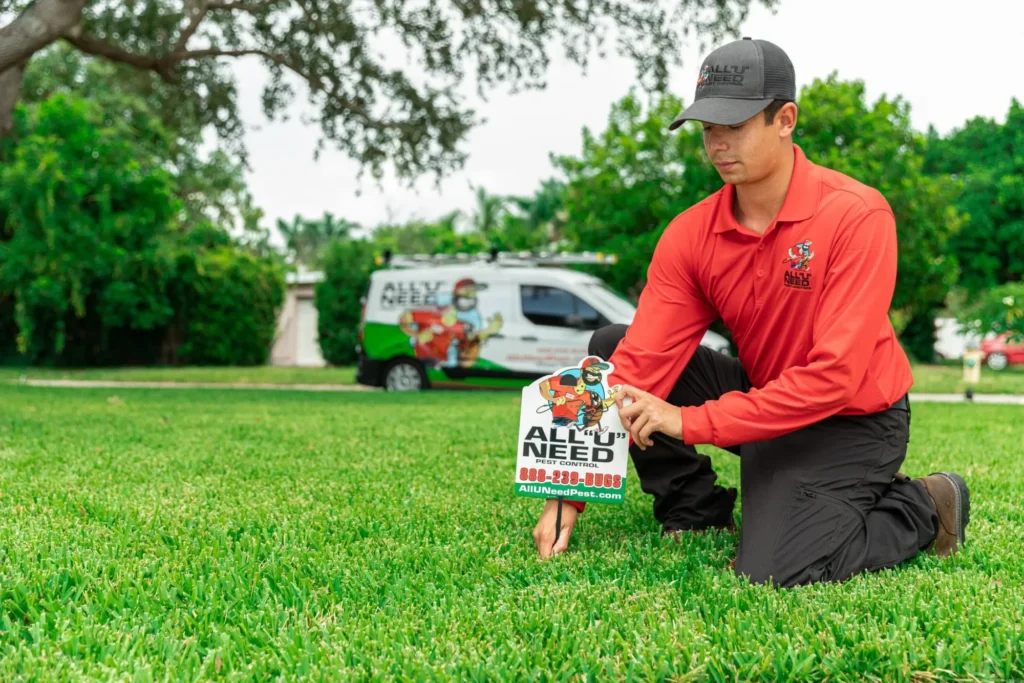
How to Prevent Millipedes in Lowcountry, SC
Reduce Moisture Levels
Moisture is the single biggest factor behind recurring millipede problems in the Lowcountry. Dehumidifiers help in damp basements or crawl spaces, while bath and kitchen fans should run long enough to clear excess humidity. Gutters and downspouts must direct water far from foundations, particularly in areas where heavy rainfall and high water tables converge. Splash blocks, corrugated extensions, and regraded soil can help eliminate soggy zones near entryways. Irrigation should avoid saturating the soil next to exterior walls.
Seal Entry Points
Millipedes exploit even the smallest openings to find their way indoors. Replacing worn door sweeps, caulking around utility penetrations, installing masonry weep-hole covers, and maintaining intact screens all help. Raised Lowcountry homes often have crawl-space doors and latticework that, if left unsealed, become highways for millipede entry. Regular checks after seasonal storms prevent cracks or gaps from expanding unnoticed.
Remove Organic Debris
Yards in the Lowcountry generate abundant leaf litter, especially from live oaks, palmettos, and magnolias. Clearing this debris after storms reduces available food and harborage. Avoid piling pine straw against foundations, and thin mulch layers to prevent moisture traps. Compost piles should be contained and positioned well away from structures. A tidier perimeter directly translates into fewer millipede invasions.
Change Your Landscaping
Landscaping choices play a critical role in millipede control. Grading improvements prevent water from pooling near the foundation. Adding gravel or stone borders around porches and walls speeds drying. Selecting plants that require less deep watering helps minimize excess soil moisture. If pine straw is your mulch of choice, keep it thin around the home’s perimeter and transition to mineral mulch within the last foot of foundation.
Keep Your Home Clean
Inside and out, simple cleanliness reduces millipede attraction. Store items off garage floors, avoid stacking damp bags of soil near doors, and remove wet mats promptly. Address small plumbing leaks right away and wipe condensation from windowsills during humid weeks. By breaking these subtle moisture cues, you discourage millipedes from lingering indoors.
Work With a Pest Control Expert
Partnering with professionals ensures long-term relief from millipede activity. All U Need Pest Control provides seasonal inspections and proactive treatments customized for the Lowcountry.
- Sealing common entry points such as foundation cracks, worn thresholds, and open weep holes without compromising airflow.
- Treating predictable travel paths, preventing millipede build-up indoors, and timing applications to rainfall and tidal patterns.
- Delivering localized prevention advice, including mulch adjustments, drainage fixes, and crawl-space dehumidification, all tailored to the Lowcountry’s environment.
Location Contact:
419 N Cedar St Summerville, SC 29483
Get Directions for 419 N Cedar StSummerville, SC 29483 on Google Maps843-489-8818
Call All "U" Need Pest Control